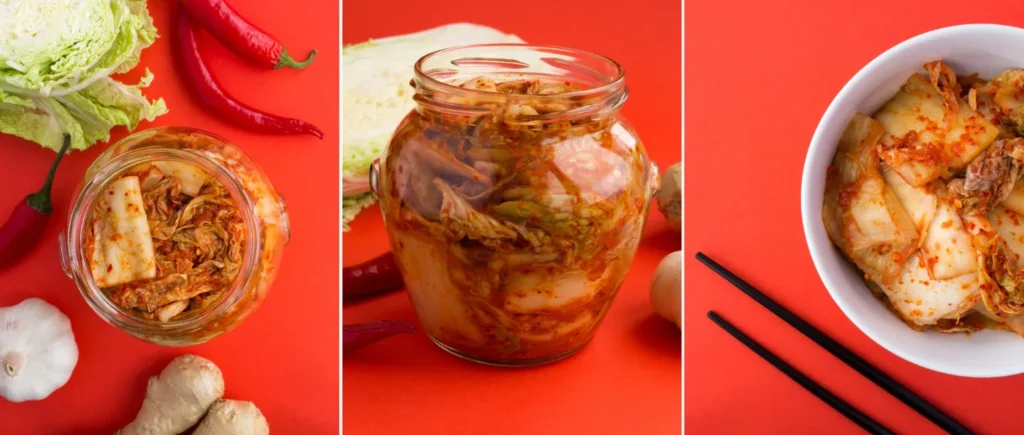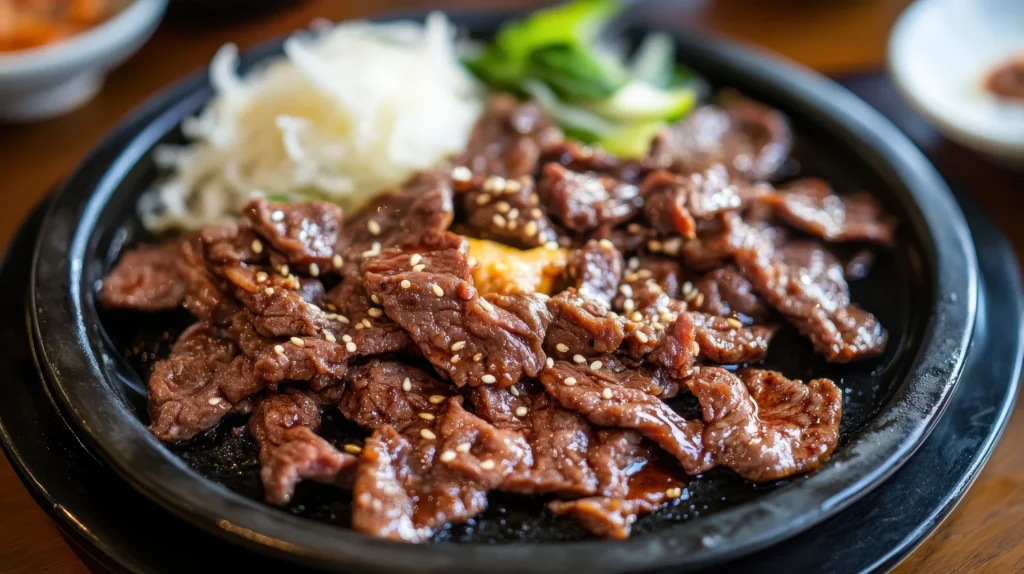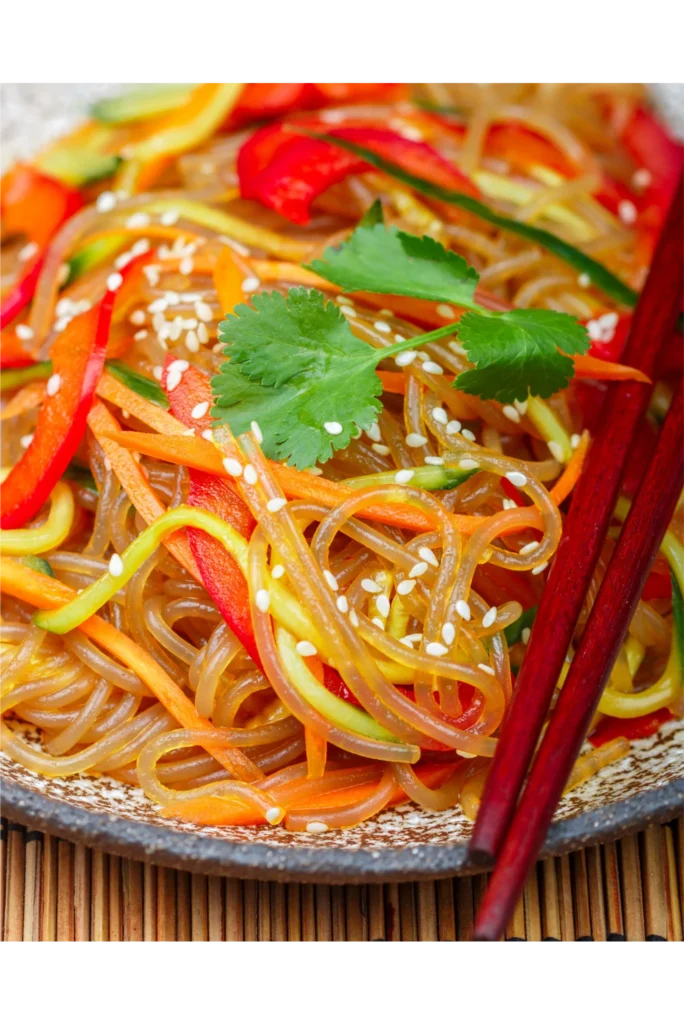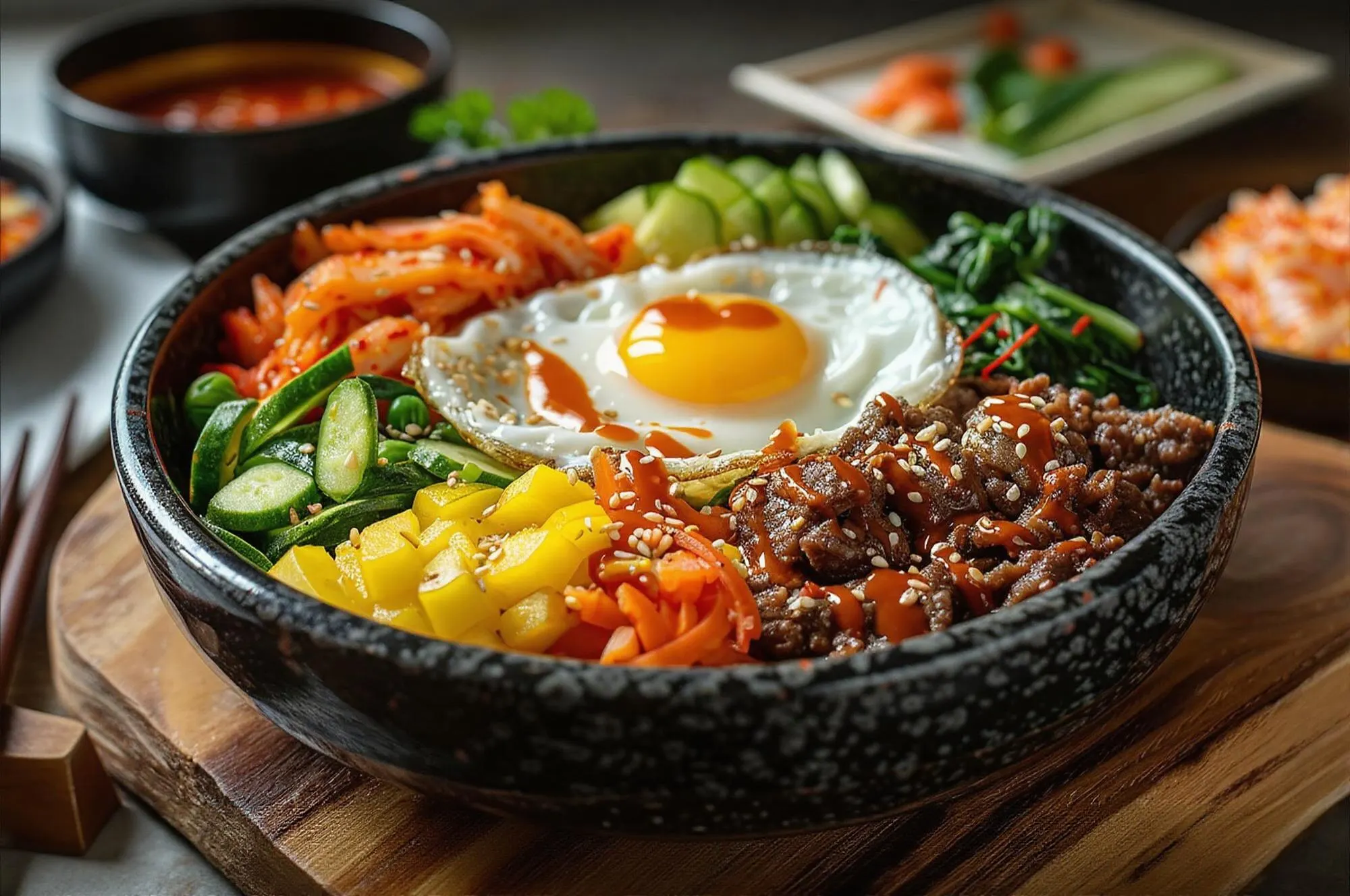Discover classic Korean recipes, key ingredients, and cooking techniques for flavorful, authentic meals. Explore a world of vibrant tastes.
Introduction
Korean cuisine has soared in popularity in recent years, captivating food lovers worldwide with its unique blend of spicy, sweet, and savory flavors. In fact, many people have become fascinated by Korean recipes through music videos, dramas, and social media content that highlight the country’s mouthwatering dishes. Therefore, it’s no surprise that “K-cuisine” has become synonymous with exciting flavor profiles and nutritious choices, appealing to both adventurous eaters and everyday home cooks seeking new experiences.
However, the essence of Korean recipes extends beyond the taste alone. For centuries, Koreans have relied on careful preparation, meticulous fermentation, and time-tested cooking techniques to honor the seasonality of ingredients. Many dishes showcase a perfect balance of vegetables, grains, and proteins, reflecting a deep cultural appreciation for harmony in color, texture, and taste. In addition, essential pantry items—such as gochujang (fermented chili paste) and doenjang (fermented soybean paste)—add layers of complexity and depth to almost every recipe.
In this comprehensive guide, we will explore the history behind Korean cuisine, the foundation of its most beloved recipes, and the cooking methods that bring these dishes to life. You will also discover key ingredients, learn how to master tabletop grilling, and, ultimately, feel empowered to create your own authentic Korean meals at home. Let us delve into a world where umami meets spice, tradition merges with innovation, and boldness coexists with subtlety. We hope you enjoy this exciting culinary journey.
Table of Contents
A Brief History of Korean Cuisine
Influences from Royal Courts and Beyond
Korean cuisine finds its roots in centuries of royal court dishes and everyday home cooking. Historically, the royal palaces set exacting standards for ingredient quality, preparation, and presentation. As a result, many Korean recipes focus on achieving perfect balance. For example, an emphasis on color—often referred to as obangsaek—highlighted five primary hues (red, green, yellow, white, and black), symbolizing health, longevity, and harmony.
Moreover, the interactions with neighboring regions, including China, have influenced the development of specific staples such as noodles, dumplings, and soybean-based sauces. However, while external elements played a role, the distinctively spicy and bold qualities of modern Korean cooking are products of centuries of adaptation. Koreans introduced chili peppers into their diets in the 17th century, leading to the creation of iconic elements like gochugaru (chili flakes) and gochujang, which are now mainstays in countless meals.
Significance of Seasonality and Fermentation
Another defining attribute of Korean cuisine is the significance of seasonality. Traditional cooks used fermentation not only to preserve foods during harsh winters but also to enhance flavors and nutritional content. Kimchi, for instance, uses brined vegetables, chili peppers, and time to develop a tangy, pungent, and spicy condiment that complements nearly every Korean dish. Therefore, any comprehensive overview of Korean recipes must emphasize the pivotal role that fermented products play in producing authentic tastes.
Furthermore, ingredient availability shaped regional differences. Coastal regions often rely on fish, seaweed, and other seafood, while inland areas favor stir-fries or stews made with poultry, beef, and local vegetables. This interplay between nature’s bounty and human creativity has led to a dazzling array of dishes, reflecting both the diversity and unifying spirit of Korean dining.
Core Ingredients and Flavor Profiles in Korean Recipes
Fundamental Fermented Pastes and Sauces
Gochujang (Fermented Chili Paste):
- Deep red paste offering sweet heat and tang.
- Made by fermenting chili peppers with glutinous rice, soybeans, and salt.
- Used as a base in many sauces, marinades, and soups.
Doenjang (Fermented Soybean Paste):
- Salty, rich in umami, and slightly pungent.
- Forms the backbone of classic soups like doenjang-jjigae.
- Often paired with gochujang to create ssamjang, a popular dipping sauce.
Gochugaru (Chili Flakes):
- Dried and crushed chili peppers with a bright red hue.
- Varied spice levels available, from mild to extra spicy.
- Commonly used to season kimchi, stews, and side dishes.
Grains, Vegetables, and Protein Sources
Rice and Noodles
Traditionally, short-grain rice is a staple on the Korean table. Its sticky texture complements side dishes and soups. However, Koreans also appreciate noodles such as glass noodles (made from sweet potato starch) and wheat-based noodles for soups, stir-fries, or cold dishes.
Fresh Vegetables
Typical vegetables include Napa cabbage, radishes, cucumber, and green onions. Leafy greens and mushrooms also appear frequently, with many recipes emphasizing quick cooking techniques like stir-frying or blanching to preserve color and nutrients.
Proteins
Although fish and seafood are vital in coastal regions, beef and chicken often appear in grilled or braised forms. Importantly, tofu and mushrooms also shine in many vegetarian and vegan renditions of Korean classics. Therefore, everyone can find something suitable, regardless of dietary preference.
Essential Korean Cooking Techniques
Stir-Frying and Braising
Stir-Frying:
- Uses moderate to high heat with minimal oil, retaining vibrant colors in vegetables.
- Commonly applied to side dishes like bokkeum (stir-fried kimchi with tofu).
- Quick cooking ensures freshness and textural contrasts.
Braising (Jorim):
- Slow cooking method that infuses ingredients with deeply savory or sweet-spicy sauces.
- Ideal for fish or vegetables and extends marinade flavors.
- Allows time for the sauce to thicken, creating bold, rich dishes.
Grilling and Fermenting
Tabletop Grilling:
Korean BBQ stands out for its social element. Thinly sliced beef, chicken, or fish is marinated in sweet-savory seasonings and grilled quickly at the table. For example, bulgogi uses a mixture of soy sauce, sugar, garlic, and onions, resulting in an unforgettable caramelized exterior.
Fermenting:
Fermented staples like kimchi, pickled vegetables, and condiments form the backbone of many Korean recipes. The slow process of fermentation enriches the depth of flavor, giving the cuisine its signature tanginess and complexity.
Classic Korean Recipes – A Culinary Overview
Kimchi

Kimchi is more than just a side dish. This beloved, centuries-old fermented cabbage is the heart of Korean cooking. Traditionally made with Napa cabbage and plenty of gochugaru, kimchi gains its famously piquant flavor from layers of salty brine, ginger, garlic, and chili paste. It can stand alone as a tasty banchan (side dish) or become a core ingredient in soups, stews, and fried rice. Therefore, mastering kimchi is a significant step in understanding Korean recipes. Check out our kimchi pickles guide.
Bibimbap
Bibimbap, literally meaning “mixed rice,” is a colorful dish that brings together an assortment of vegetables, proteins, and a gochujang sauce over a bed of steamed rice. Common toppings include spinach, zucchini, carrots, and mushrooms. However, the key to a great bibimbap lies not just in the produce but also in the balance of textures and flavors once everything is mixed together. Sometimes served in a hot stone bowl (dolsot), bibimbap develops a crusty rice layer at the bottom that adds extra crunch and richness.
Tteokbokki
Tteokbokki is a beloved street-food specialty featuring chewy rice cakes smothered in a spicy-sweet chili sauce. Vendors often include fish cakes, boiled eggs, or green onions for added texture. Because of its comforting, hearty appeal, tteokbokki’s popularity spans generations and remains a symbol of casual, sociable Korean dining.
Korean BBQ

Korean BBQ is a social event where marinated meats like beef or chicken cook on a tabletop grill, often accompanied by lettuce wraps, fresh garlic, sliced chilies, and an assortment of dips. Bulgogi is a prime example, highlighting thin cuts of beef marinated in soy sauce, sweetener, garlic, sesame oil, and onions. Alternatively, dak bulgogi (chicken bulgogi) offers a lean, juicy twist on this classic. Each bite can be packed with side dishes, known as banchan, that feature kimchi, pickled radishes, or seasoned sprouts.
Japchae

Japchae is a festive dish made from stir-fried glass noodles (dangmyeon) and assorted vegetables tossed in a slightly sweet soy-based sauce. The noodles’ slippery, chewy texture pairs well with the crunch of carrots, onions, peppers, and spinach. Although often associated with celebrations, japchae is versatile enough to be served year-round as a light lunch or as part of a larger spread.
Regional Highlights in Korean Dishes
While the country is relatively small, Korea boasts regional distinctions that make each local specialty unique:
- Jeonju: Famously associated with a meticulously constructed bibimbap, featuring various garnishes like soybean sprouts, marinated beef, and raw egg yolk.
- Busan: Known for seafood dishes that capitalize on the city’s coastal resources, including fish stews and seafood pancakes.
- Gyeongsang Province: Tends to favor spicier flavors and hearty stews.
These differences demonstrate how geography influences the culinary landscape. Therefore, trying regional specialties offers a deeper appreciation of Korean recipes, inspiring home cooks to explore new taste possibilities.
Detailed Korean Recipe – Vegetable Bibimbap
Below, you will find a vegetarian-friendly bibimbap recipe that highlights the essence of Korean recipes without using any meat. This dish is colorful, balanced, and truly delicious.
Ingredients
(Serves 4)
- 2 cups short-grain white rice, uncooked
- 1 cup spinach, blanched and drained
- 1 cup julienned zucchini
- 1 cup julienned carrots
- 1 cup sliced mushrooms (shiitake or button)
- 1 tablespoon soy sauce (low sodium preferred)
- 1 teaspoon sesame oil
- 1 tablespoon cooking oil (e.g., canola or vegetable oil)
- 1 tablespoon gochujang (to taste)
- 1 clove garlic, minced
- Salt and pepper to taste
- Sesame seeds for garnish
- Optional toppings: fried egg, bean sprouts, or sliced tofu
Expanded Step-by-Step Instructions
- Cook the Rice
- Rinse the rice under cold water until the water runs clear.
- Place the rice in a pot with 2 cups of water (ratio: 1:1 for short-grain rice).
- Bring to a boil, then reduce heat to low, cover, and cook for about 15 minutes or until water is absorbed.
- Turn off heat and let it rest for 5 minutes before fluffing with a fork.
- Prepare the Vegetables
- Blanch the spinach in boiling water for about 30 seconds, then shock in cold water. Squeeze out excess liquid and season lightly with a pinch of salt and 1 teaspoon sesame oil.
- Julienne the zucchini and carrots into thin matchsticks for quick, even cooking.
- Slice the mushrooms into even pieces.
- Stir-Fry Each Component
- Warm a skillet over medium heat with 1 tablespoon of cooking oil.
- Add carrots, stir-fry for about 2 minutes, then season with a pinch of salt. Remove and set aside.
- Stir-fry zucchini similarly, seasoning lightly with salt and pepper. Remove and set aside.
- Stir-fry mushrooms with minced garlic, add soy sauce for flavor, and cook until tender.
- Assemble Your Bibimbap
- Place a portion of rice in the center of each serving bowl.
- Arrange the spinach, zucchini, carrots, and mushrooms neatly around the rice.
- Optionally, top with a fried egg or tofu slices.
- In a small dish, mix gochujang with a bit of water or sesame oil if you prefer a thinner consistency.
- Final Touches
- Drizzle additional sesame oil over the top for aroma.
- Sprinkle sesame seeds for added texture.
- Serve with gochujang on the side, allowing each diner to mix in as much or as little spice as desired.
Nutritional Profile
Below is the approximate nutritional information per 100g of this bibimbap dish (without an egg or tofu):
| Nutrient | Per 100g |
|---|---|
| Calories | 160 kcal |
| Carbohydrates | 28 g |
| Protein | 3 g |
| Fat | 3 g |
| Dietary Fiber | 2 g |
| Sodium | 120 mg |
| Vitamin A | 20% DV |
| Vitamin C | 15% DV |
(Values may vary depending on specific ingredients and serving sizes.)
Therefore, this balanced bowl provides a wholesome meal rich in fiber, vitamins, and minerals.
Korean Dining Etiquette and Serving Suggestions
The Role of Banchan (Side Dishes)
In a typical Korean meal, banchan (small side dishes) is as crucial as the main course. Kimchi frequently appears alongside marinated sprouts, pickled radishes, and seasoned seaweed. These accompaniments provide contrasting flavors that keep the palate engaged throughout the meal.
Eating Customs
Traditionally, diners wait until the eldest person begins to eat, reflecting the importance of respect for elders. In addition, communal soups or stews may be shared, encouraging a sense of unity at the table. Although utensils vary from culture to culture, Koreans often use stainless steel chopsticks and spoons, ensuring that noodles, soups, and rice are eaten with ease.
Health Benefits of Korean Recipes
Korean recipes often emphasize vegetables, fermented foods, and lean proteins, making them nutritionally appealing. For example, kimchi is celebrated for its probiotic content, supporting gut health. Additionally, the reliance on fresh produce and grains creates a balanced intake of essential nutrients. Therefore, those interested in boosting their dietary variety without sacrificing flavor can find numerous benefits in Korean cuisine.
Conclusion
In conclusion, exploring Korean recipes opens the door to a world where bold flavors blend with mindful preparation. From the essential fermented pastes that underpin every dish to the communal spirit of Korean BBQ, this cuisine celebrates both tradition and adaptation. Moreover, the variety of ingredients and cooking styles ensures that there is something for everyone, whether you crave comforting stews, spicy street foods, or health-focused meals packed with vegetables.
Therefore, we encourage you to try your hand at preparing these beloved dishes. Experiment with the depth of gochujang, master the delicate balance of bibimbap toppings, or perfect your kimchi fermentation technique. By immersing yourself in Korean cooking, you will discover the joy of vibrant, wholesome meals that can easily become part of your everyday culinary repertoire.
Frequently Asked Questions
Below are some common questions people ask regarding Korean recipes and dining customs:
What is Korea’s most popular food?
Kimchi is arguably the most famous food in Korea. It’s served at almost every meal and includes countless variations to suit different tastes.
Which Korean food should a beginner eat?
Beginners may enjoy bibimbap due to its colorful presentation and customizable ingredients. It’s easy to adjust the spice level and add your favorite vegetables.
What is a typical Korean meal?
A typical Korean meal usually includes a bowl of rice, a main dish (such as a stew or grilled item), and several banchan (side dishes), with kimchi often present.
What are some good Korean side dishes?
Classic side dishes include seasoned bean sprouts, spinach, kimchi, braised potatoes, and cucumber salad. These banchan offer contrasting flavors and textures.
You can also explore more culinary adventures with our shrimp spaghetti recipe or learn new methods for cooking fish in our king salmon recipe guide to accompany or enhance your Korean meals.

